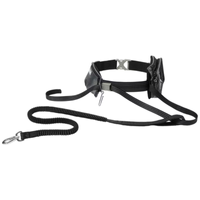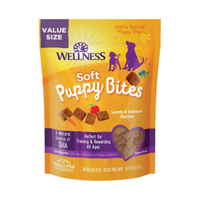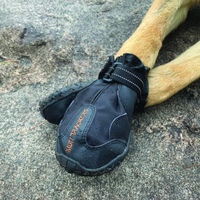I bonded with my dog through running - here’s how you can do the same
Want to start running with your dog? Here’s how I built a bond with my dog out on the trails.
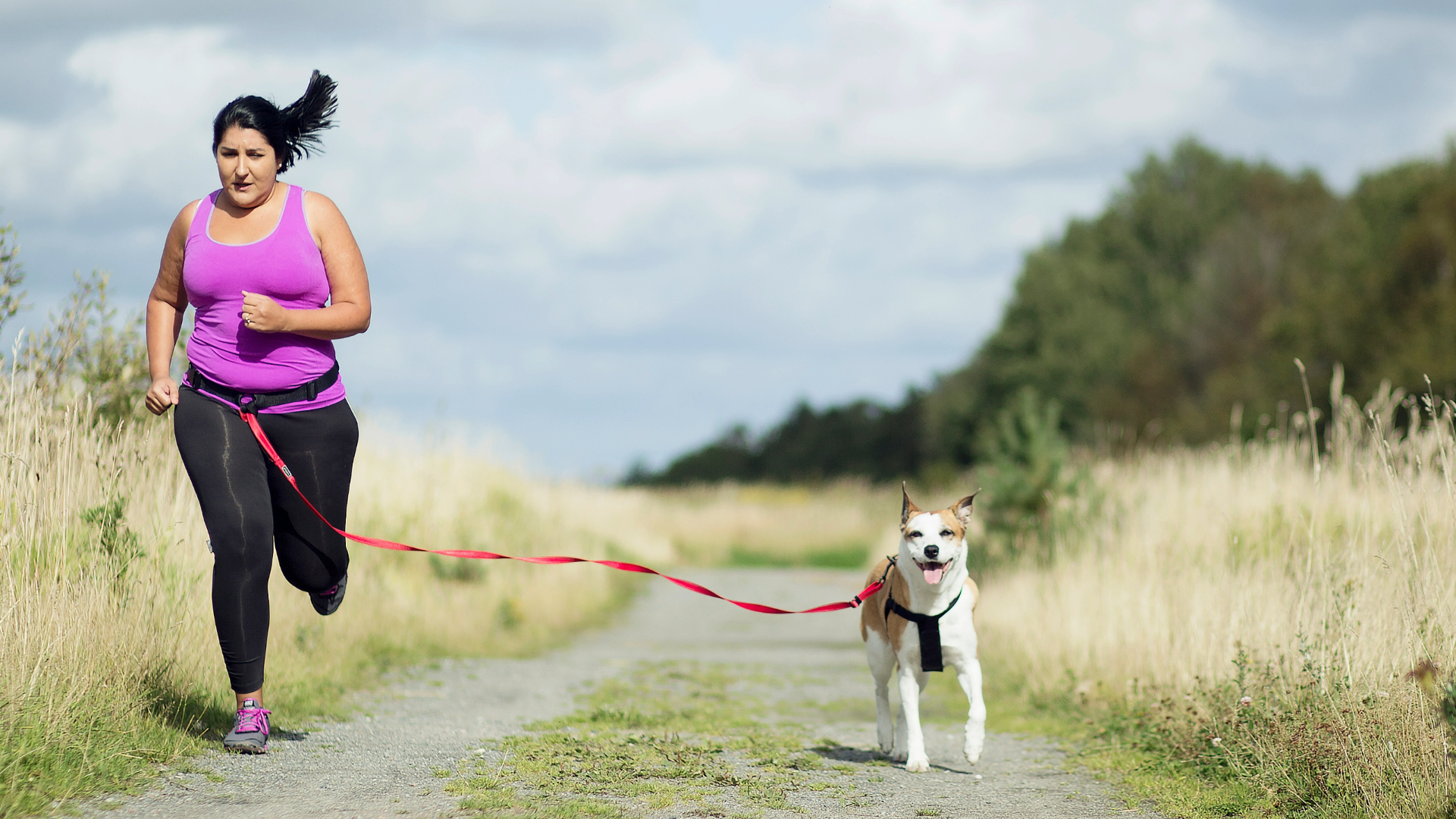
Running with dogs has become a popular sport for dog owners worldwide. The sport, known as canicross (short for canine cross country), began as out-of-season training for the sled dog community (mushing) but quickly evolved into national and international events overseen by the International Canicross Federation (ICF).
I started canicrossing because I had one dog with reactivity issues and another that was cognitively challenged and could not go off the leash. I got addicted to it, and from 2013 to 2019, my fiancé and I organized a popular canicross event in the UK. We regularly had a hundred or more competitors and several hundred dogs who loved the twisty, single-track woodland setting. I’m now a dog behaviorist and have built a strong bond with my dog through running. Here, I share how and what you need to know.
Before you get started, you might want to invest in the best dog harness and check out these 10 tips for running with your dog.
Why do dogs love canicross?
Dogs are natural athletes, so running at speed with their humans fulfills a drive that isn’t easy to replicate from walking or running loose in fields. Even running short distances together results in a calm, happy, and contented dog.
Running with dogs is a sport best suited to cooler temperatures and low humidity, especially if your dog has a thick coat. Sporting events typically run from late September to early spring.
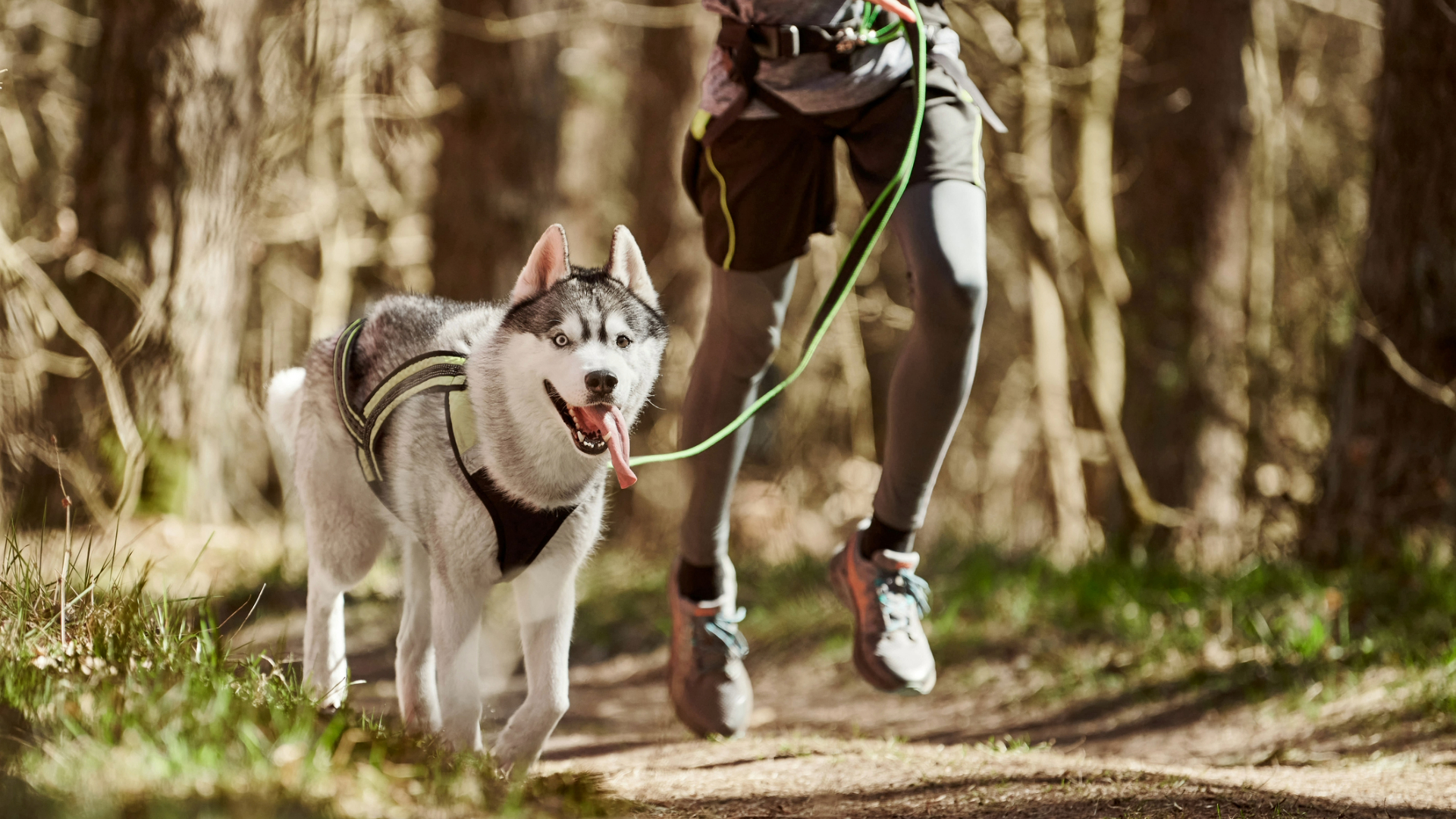
Equipment and training requirements for running with dogs
The primary benefit of canicross is that it’s open to everyone. You don’t need to be an athlete or own a sporting breed. Whether you have an Irish wolfhound or a chihuahua, it takes very little equipment and a few basic commands, and you are good to go.
Firstly, invest in quality purpose-made equipment. You will need:
PetsRadar Newsletter
Get the best advice, tips and top tech for your beloved Pets
- A running belt for you
- A well-fitted running harness for your dog (if you’re wondering how to put a dog harness on, this guide can help)
- A bungee line with a secure clip
Frisco Outdoor Running Belt with Bungee Dog Leash
This affordable running belt comes in various sizes and colors, with handy pockets to store bags, treats, or other personal items. You don’t need to worry about buying a bungee leash either, because this comes with a shock-absorbing one already.
Basic commands are essential. Sometimes, you may run downhill on tricky terrain, and if you have a big, strong dog, it’s safer if they run by your side.
The following are a few commands you might find helpful:
- Steady – teach this exercise at home before starting canicrossing, and practice when out walking by varying your speed.
- Wait or back – Take a step forward with your dog by your side. As your dog moves ahead, stop and bring him back to heel. Once he understands the exercise, add the word “Wait.”
- This exercise alone is brilliant for helping reactive dogs manage their emotions and focus on you.
- Line out – You want your dog at the end of the bungee line and not by your side. The most effective way to teach a line out is to ask a friend to hold the dog at the end of the line. Alternatively, invite a few friends over with dogs and ask them to walk ahead.
- Left and right – To train directional commands, use a positive motivator. If your dog loves a ball, sit him at your side and throw the ball left and after a few throws, add the word “Left.” After that, practice throwing right with the command “Right.” If your dog isn’t ball-motivated, you can use some of the best dog treats instead.
- Go or go by – Sometimes, you may need to pass others out walking or running. Practice with a few doggy friends to teach your dog to run past without stopping to sniff or bark. It also helps stop your dog from diving into the bushes after a squirrel. Yes, I have first-hand experience of face planting in the early days of training Poppy!
Wellness Soft Puppy Bites Lamb & Salmon Recipe Grain-Free Natural Dog Treats
When training your dog the basic commands, one of the best ways to reward them is with a tasty treat. These soft bites are a good option containing high protein, antioxidants, and DHA (an omega-3 fatty acid that helps to promote a healthy brain).
Limit the training to ten-minute bursts so your dog doesn’t get bored or confused. Let your dog wear the harness around the house to get used to it.
The objective of the harness is for your dog to pull into it comfortably with his chest and shoulders to maximize muscular strength. Some dogs don’t pull – or are too small to pull a human – but are happy to run in front.
A common question is, “If I encourage my dog to pull me out running, will he no longer walk to heel on the lead?” It’s a weird phenomenon, but every dog I’ve met and trained seems to know the difference between walking on the lead and canicrossing.
Multiple influences shape the context of the canicross experience, such as you likely wear running gear, you may feel more excited about a run, and the dog wears different gear, too.
How running with dogs helps develop your bond
My rescue weimaraner cross, Poppy, was highly reactive, impulsive, and a powerhouse of energy. Finding ways to tire her seemed impossible. Even after a five-mile walk off lead, she’d still bounce around the house with her toys while the other dogs tried to rest.
The first time she ran in a harness, we covered only two miles together. When we returned home, Poppy disappeared into the dining room and slept in her chair for several blissfully calm hours.
During our time together, we ran several half marathons, multiple 5k and 10k races, and ran three times a week at home. The more we ran, the closer we became. Teaching her the commands helped calm Poppy’s impulsivity and kept me upright during challenging hill races. I genuinely believe that canicross changed our relationship for the better.
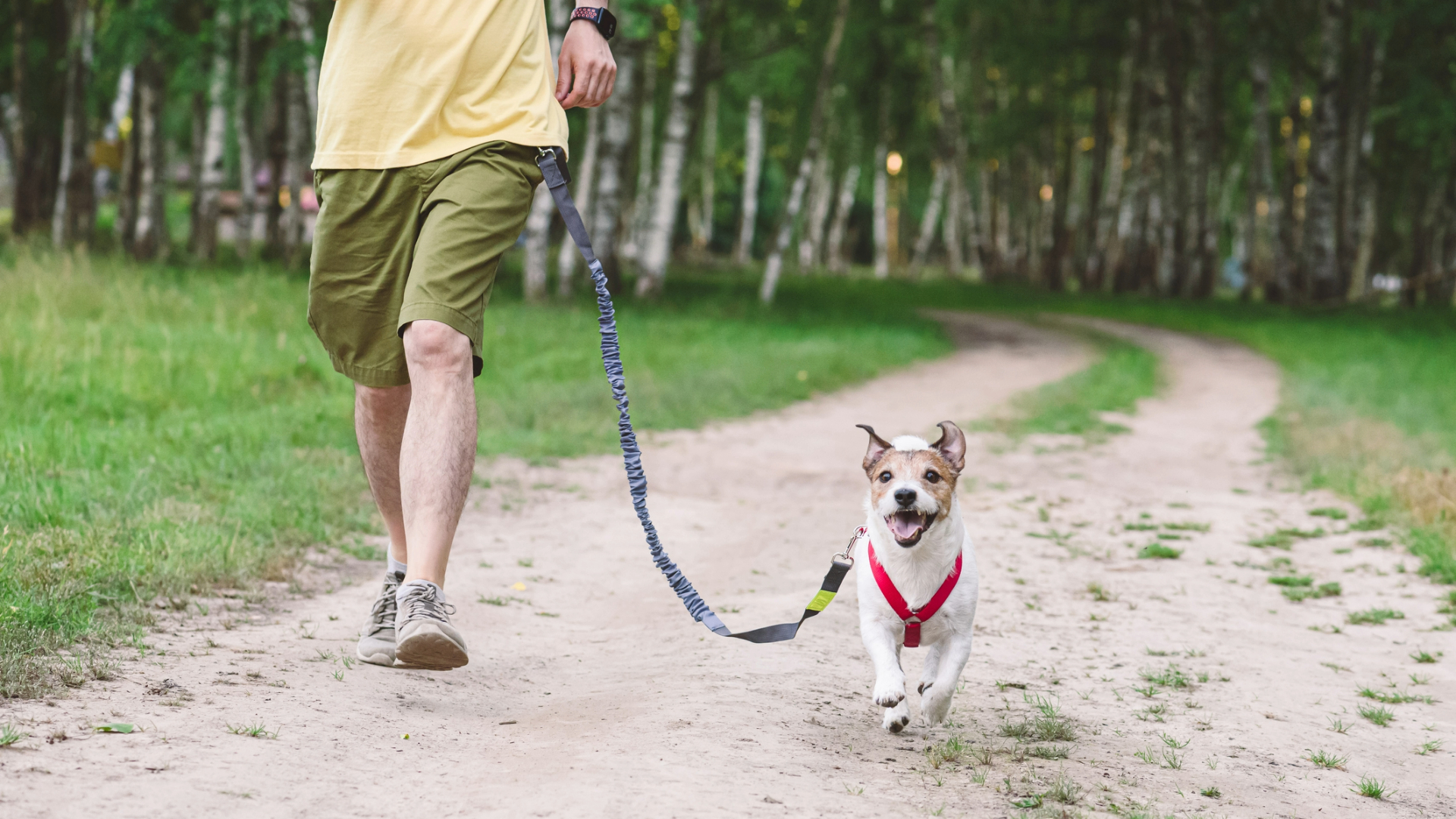
Guidelines for a happy experience running with your dog
Canicross should be fun for your dog. At times during our race event, I noticed some competitors became overly focused on winning. They forgot that running with a dog is about teamwork, a shared experience of trust, cooperation, and partnership.
Here are some guidelines to follow:
- Increase the miles steadily so you and your dog build fitness without injury.
- Avoid running on roads. Running cross country is better for your dog’s joints and paws. If your dog has sensitive pads, get some doggy running boots. Yes, really!
Muttluks Trackers All-Season Dog Boots, Black
Protect your pup’s paws with these waterproof dog boots, available in various different sizes. They’ll protect your dog from harsh weather conditions, rough surfaces, as well as hazards, like glass or debris on the floor. Plus, they look adorable.
- Give your dog some free time. Occasionally, let your dog run loose if it is safe to do so.
- Monitor your dog carefully. If it is a little warm and your dog starts panting more than usual, stop running and allow your dog to recover.
- Carry water – even in the winter months, some dogs get thirsty when running in harnesses.
- Check the harness isn’t rubbing – some dogs have more sensitive skin. If the harness rubs, check the fit and add some sheepskin padding if necessary.
- Stay positive – use reward-based training and work hard to develop your running partnership.
If your dog isn’t keen to run in front to the end of the line, slow everything down and stick to walking in harness for a while.
There are many canicross clubs across Europe where you can join others to run with dogs. One of our dogs wasn’t interested in canicrossing until we joined eighteen members one Sunday morning for a five-mile run. Ellie, a labrador/collie cross, was unstoppable after that, although she always preferred running in a group to solo running.
Once you start running with your dog, you may notice a change in your relationship. Your dog may get excited when you get the harness ready or put on your trainers and running gear. There’s nothing quite like running with dogs. It makes running so much more fun than pounding the trails alone.
If you’re looking for more ways to bond with your pup, here’s how to play with a dog. Wondering how much exercise do dogs need? This feature has the answers you’re looking for. Want to switch up your walking or running route? Here are some of the best dog walks in the US to try out.

Jan is a dog behaviorist and writer living in the Cotswolds, UK. She has shared her life with dogs for over fifty years and is fascinated by behavior. She enjoys helping people better understand their dogs to develop a deep bond and enjoy time together. Jan particularly enjoys working with impulsive and reactive dogs as her legacy from helping Poppy, her rescue Weimaraner cross overcome fear reactivity.
